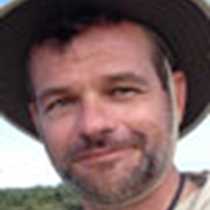Bartolomé and Santiago Islands
The southern trade winds are strong this year, pushing the Humboldt Current’s cold water well into the tropic belt. These cold waters reach the archipelago and bring a wealth of minerals and nutrients that cause the marine primary production to bloom. This abundance was expressed this morning in a massive flood of jellyfish at Bartolomé Bay.
From the summit of the island we could spot patches of brownish color speckling the water. In the sea we found ourselves surrounded by those almost invisible organisms.
On Santiago Island while walking along the intertidal zone at Pto Egas, I was impressed by the invasion of sea lettuce, in every tide pool, wrecked along the high tide line, this algae covers every suitable place – another boost of growth caused by the cold sea.
When the food chain provides an abundance, this represents great opportunities for the marine life. As a consequence, we can expect to observe a great breeding activity among the colony of marine birds this year. This is good news for the penguin population, so dependent on the cold current upwelling in the archipelago.
On the other hand, those cold waters dry off the atmosphere and a thick fog covers the islands and prevents rain from falling. The coast remains desperately dry, most of the vegetation will soon turn into dust, cutting down the life on land. This year is officially La Niña phenomenon.
This ever-changing and unpredictable climate makes surviving on Galápagos particularly tough, as organisms find themselves forced to adapt to randomly changing rules of the game of life. Natural selection results, and this and shapes generation after generation of the populations that live on every island. And this is what precisely makes the Galápagos so interesting to us. We can observe adaptation and speciation as part of the dynamic process caused by the interaction between physics and chemistry of life.
What a wonderful mystery this is – the origin of life on earth.




